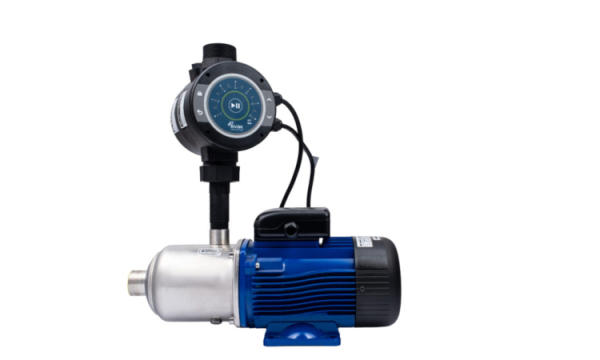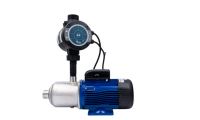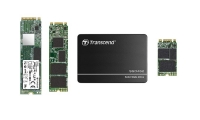- Superior Energy Efficiency: The presence of an integrated inverter allows the pump to draw power directly from renewable energy sources, such as solar panels, dramatically reducing energy consumption and operational expenditures. Furthermore, the inverter's ability to modulate the pump's speed based on the available power supply optimizes energy utilization.
- Uninterrupted Water Pressure: The pressure tank is designed to maintain a consistent water pressure level within the system and make the inverter operation more smooth. This feature is particularly advantageous in scenarios where water demand fluctuates throughout the day.
- Enhanced Pump Performance: The inverter can optimize the pump's overall performance by adapting its speed in accordance with the required flow rate and head conditions. As a result, wear and tear on the pump are reduced, and its operational lifespan is extended.
- Comprehensive Protection Features: Many integrated controllers come equipped with built-in protection mechanisms, such as overload, overvoltage, undervoltage, and dry run protection. These safety measures help protect the pump and other system components, thereby prolonging their service life and minimizing maintenance expenses.
- Streamlined Installation and Maintenance: The integration of an inverter and pressure tank into the pump controller simplifies the installation process, as fewer components need to be installed and connected separately. This consolidated design also eases maintenance tasks, rendering them less labor-intensive.
- Advanced Remote Monitoring and Control: Numerous integrated pump controllers feature remote monitoring and control capabilities, enabling users to assess system performance, troubleshoot issues, and adjust settings from a remote location. This functionality is particularly beneficial for extensive, distributed water supply systems or those situated in remote areas.
- Space-Efficient Design: By combining the inverter and pressure tank within the pump controller, the overall system footprint is reduced, making it easier to install the system in areas with limited space.
- Cost-Effective Solution: An integrated system is often more cost-efficient than purchasing and installing separate components, as it consolidates multiple functions into a single device. Furthermore, the increased energy efficiency and reduced maintenance costs contribute to long-term financial savings.
In conclusion, a pump controller that features an integrated inverter and pressure tank offers an array of benefits that enhance the performance, efficiency, and reliability of a water pumping system. This innovative design also simplifies installation and maintenance procedures, making it a prudent investment for any water pumping project.


























